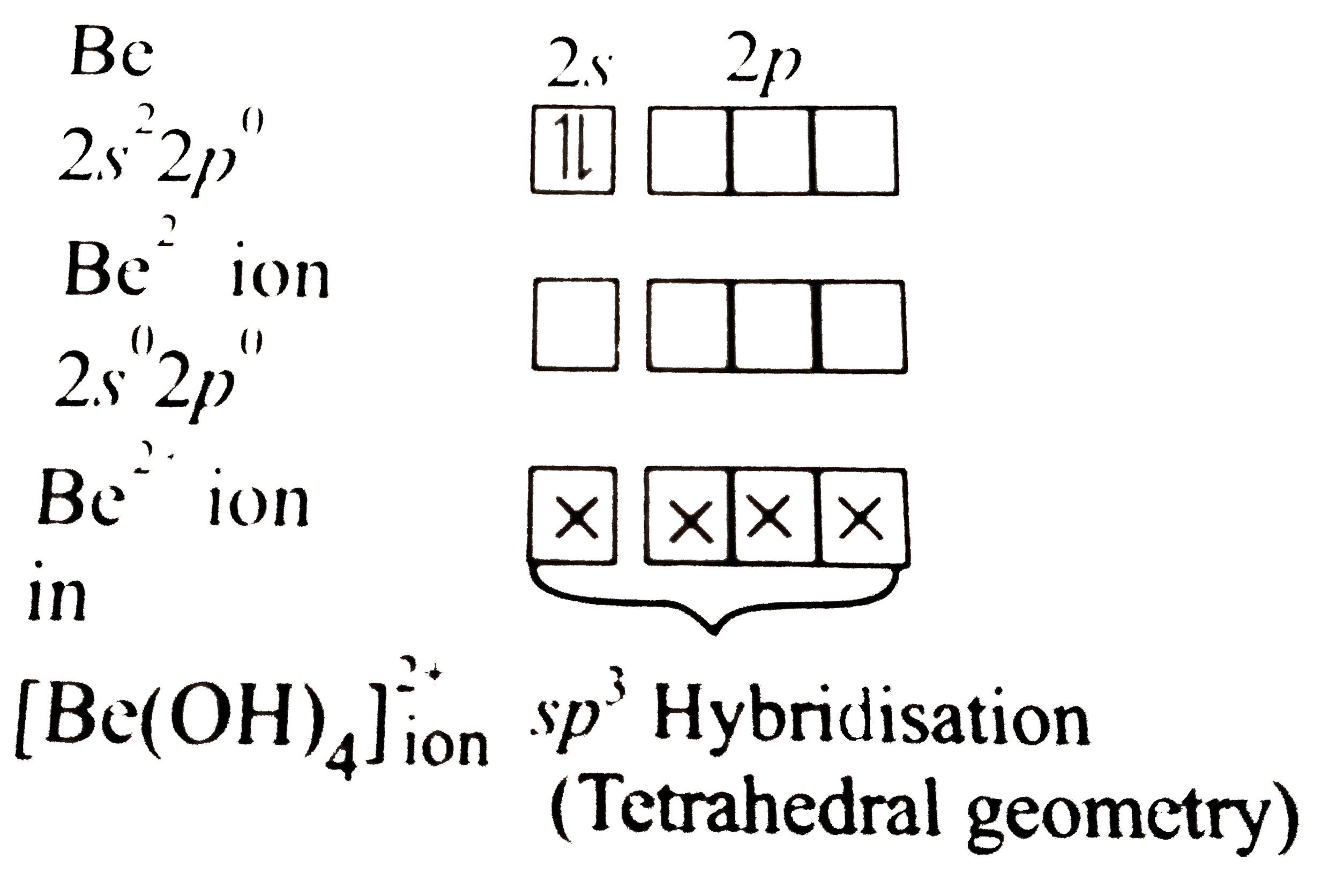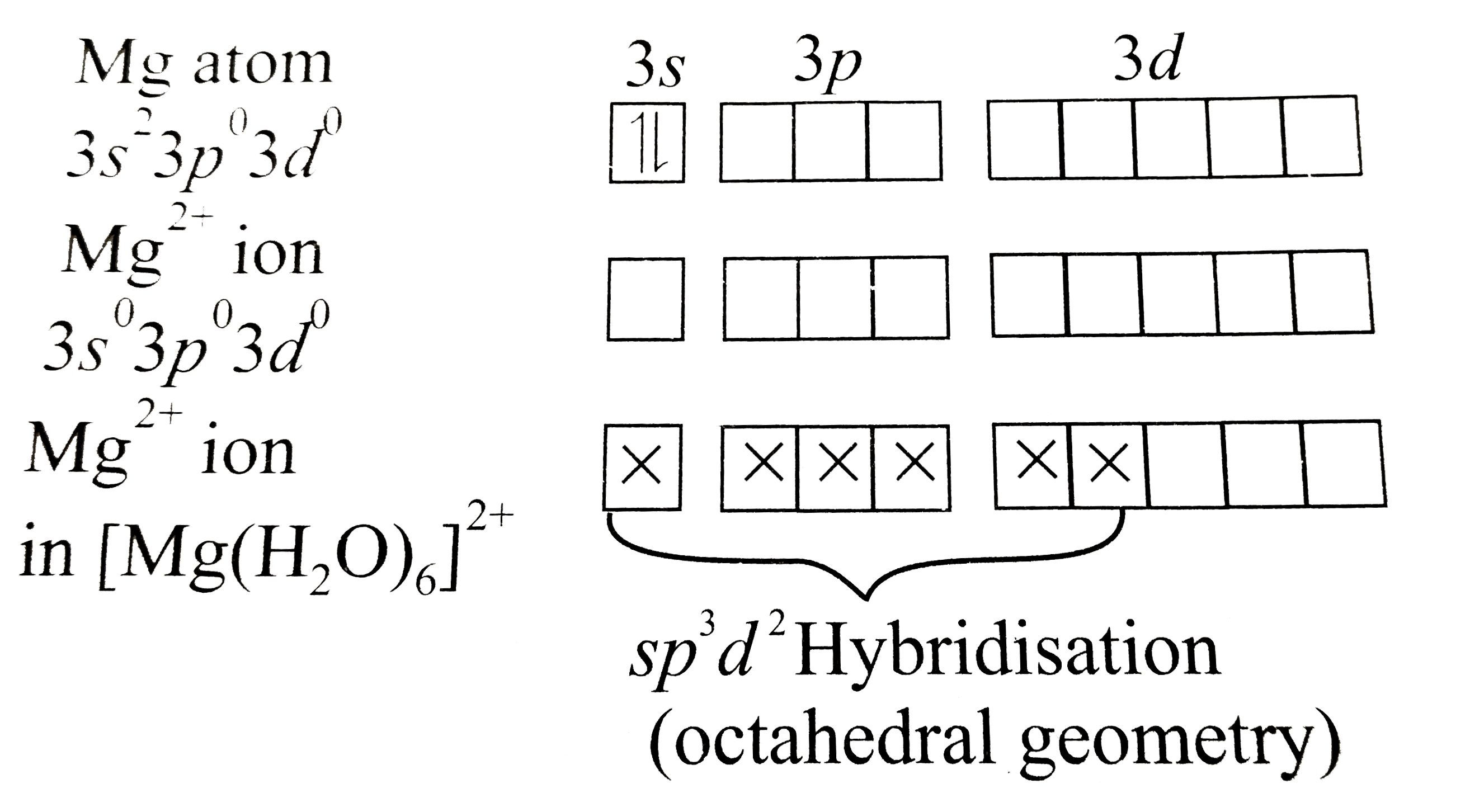(a) [BeF4]2− exits, but [BeCl6]4− does not. Give reson.
(b). Hydrated beryllium ion exists as [Be(H2O)4]2+, whereas hydrated magnesium ion exists as [Mg(H2O)6]2+. Give reason.
Text Solution
a. [BeF4]2− exists, but [BeF6]4− does not. This can be explained on the basis of valence electronic configuration:

Due to the absence of low-lying d-orbitals in beryllium, it cannot expand its coordination number beyond4, hence [BeF4]2− exists, but [BeF6]4− does not.
b. Hydrated beryllium ion exists as [Be(H2O)4]2+.

Due to the presence of only four orbitals of equivalent energy in Be2+ ion and due to the absence of low-lying d−orbitals in Be2+ ion, it can coordinate with four water molecules only, hence hydrated beryllium ion exists as [Be(H2O)4]2+.
Whereas in case of magnesium, due to the availability of low-lying d-orbitals of suitable energy, Mg can expand its coordination number to 6

Hence, hydrated magnesium ion exists as [Mg(H2O6)]2+
|
Updated on:21/07/2023
Topper's Solved these Questions
- BOOK - CENGAGE CHEMISTRYCHAPTER - S-BLOCK GROUP 2 - ALKALINE EARTH METALSEXERCISE - Solved Example6videos
S-BLOCK GROUP 2 - ALKALINE EARTH METALS
- BOOK - CENGAGE CHEMISTRYCHAPTER - S-BLOCK GROUP 2 - ALKALINE EARTH METALSEXERCISE - Exercises Linked Comprehension42videos
S-BLOCK GROUP 2 - ALKALINE EARTH METALS
- BOOK - CENGAGE CHEMISTRYCHAPTER - S-BLOCK GROUP 1 - ALKALI METALSEXERCISE - Archives Subjective8videos
S-BLOCK GROUP 1 - ALKALI METALS
- BOOK - CENGAGE CHEMISTRYCHAPTER - SOME BASIC CONCEPTS AND MOLE CONCEPTEXERCISE - Archives Subjective11videos
SOME BASIC CONCEPTS AND MOLE CONCEPT
Similar Questions
Knowledge Check
- Question 1 - Select One
[Sc(H2O)6]3+ ion is
AColourless and diamagneticBColoured and octahedralCColourless and paramahneticDcoloured and paramagnetic - Question 2 - Select One
[Sc(H2O)6]3+ ion is
AColourless and diamagneticBColoured and octahedralCColourless and paramagneticDColoured and paramagnetic - Question 3 - Select One
[Sc(H2O)6]3+ ion is :-
AColoured and paramagneticBColourless and paramagneticCColourless and diamagneticDColoured & octahedral
[Sc(H2O)6]3+ ion is :-
View SolutionIn the hydrated choride of magnesium
MgCl2.(H2O)xthen'x'isView SolutionIn the hydrated choride of magnesium
MgCl2.(H2O)xthen'x'isView SolutionExplain the following giving reasons
[Fe(H2O)6]3+ ion is more paramagnetic than [Fe(CN)6]3− ionView SolutionThe structure of [Cu(H2O)4]++ ion is
View Solution

